Even though the nuclear threat from North Korea seems to be ebbing for the moment, that doesn’t mean dozens of other nuclear related problems won’t pose a serious threat in the near future.
Protecting your trailer from nuclear disasters, regardless of their origin, can be impossible if you don’t know what the actual problems are or how to solve them. Back in the day when I was growing up, we were taught that you only needed a shovel and a few feet of dirt all around you to survive the first few minutes to hours after a nuclear blast. Extending that timeline to two weeks or more means that you must prepare your trailer so that you can eat and carry out other daily life needs.
Here are ten things you can do to prepare your trailer for a nuclear disaster:
Monitoring for Nuclear Radiation
Nuclear power plant leaks, situations like Fukushima, and dirty bombs don’t necessarily give warnings that a nuclear disaster is about to happen. Without suitable monitoring of your home for the presence of nuclear radiation, you will never know that something is going on, let alone figure out what to do about it. Aside from traditional Geiger Counters, there are two relatively simple and inexpensive devices that you can use to detect the presence of ionizing radiation:
- Nuclear Radiation Tester for Smart Phones – These devices rely on semi-conductors to detect the presence of ionizing radiation. They are easy to obtain and use. Just make sure you back them up with some other system that will not be ruined by an EMP caused by high altitude explosions or various natural causes such as coronal mass ejections from the sun.
- Kearny Fallout Meter – These devices are very easy and cheap to make. Ideally, you should have one for reach room and spend some time getting to recognize the difference between the presence of ionizing radiation and the need for recharging the device. There are many free guides online that will show you how to operate one of these meters as well as how to maintain it.
Have an Underground Bunker Beneath the Trailer
If you take into account nuclear reactors, waste disposal sites, nuclear medicine facilities, and other sources of man-made nuclear radiation, it is understandable that most people will focus almost exclusively on the risk associated with ionizing radiation. Even though there are far too many nuclear armed nations that are hostile to the United States, it can sometimes seem surreal to seriously consider that one of those nations will successfully explode a nuclear bomb on our soil. It is also, often, very hard to believe that a military nuclear accident, or even some kind of hostile takeover could result in our own nuclear bombs and facilities being turned against us in such a way that they produce an explosion.
That all being said, no discussion on preparing your trailer for a nuclear event would be complete without discussing thermal winds and fires. Both of these can and will occur in a nuclear explosion regardless of how it was triggered or its origin. Fortunately, an underground shelter can be used to protect you and your stockpile from both radiation and thermal risks. If you own the land beneath your trailer, at least see about putting a root cellar beneath the trailer.
Make sure the hatch area has at least 3 – 5 feet of dirt or sand on top. From there, you can always expand into a larger bunker system. Remember, it does not take much earth to shield from nuclear radiation, however you will still have to pay attention to air purification and oxygenation. Any underground bunker and storage system should be able to supply enough clean and oxygenated air for at least two weeks and be stretched to a year via routine maintenance if need be.
Living in a trailer park can make it impossible to do any kind of digging, especially if your trailer is located on a cement pad or there is very little land between trailers. Under these circumstances, it will be worth your while to discuss the matter with other tenants in the park. Depending on how much land is available, it may be possible to discuss options with the owner of the park. A community underground bunker can translate into a useful advertising asset for the trailer park owner even as it expands options for you and your family to remain safe in time of need. This includes providing an optimal location for getting through tornadoes that are increasingly popping up in areas that aren’t usually prone to them.
Make Use of Plants, Trees, and Mushrooms
As you may be aware, radioactive particles move at different speeds. The slower moving ones can be stopped by something as fragile as a piece of paper or the garments covering your body. Unfortunately, it is the faster moving particles that do the most damage because of how easily they can pass through most materials. Typically, your best chance of surviving any kind of ionizing radiation spread entails being able to put as much material between you and the particles as possible.
While dirt, sand, lead, water, and boron tend to be the best materials, that doesn’t mean you should ignore the potential found in plant based materials. In fact, after the initial incident occurs, plants, trees, and even mushrooms will offer the most in terms of protection and restoring the land.
Here are a few things to consider:
- Trees can be used as firebreaks. Deciduous trees or fruit trees that do not have a lot of volatile oils in the sap or leaves will work best. They should also carry a high water content in the leaves. To use trees as a firebreak against thermal winds, do not forget to keep dead wood pruned and falling leaves mulched into the soil. As with wild fires [1] and other high temperature scenarios, the trees can also slow down the progression of fires that erupt from thermal winds. Choose trees that will grow well in the soil type and climate for your area. Let’s say maple trees do not grow well in your area. Even though these trees tend to make good fire breaks, they will only cause more problems if they grow poorly or leave a lot of dead wood around. It should also be noted trees will absorb ionizing radiation just like anything else. They may not be the best or most impermeable barrier to radiation, however they are better than nothing.
- Plants can also be of use – when it comes to slowing down conventional fires or wildfires, the ground cover around your home is also very important. In this case, you should also look for plants that have as little volatile oil in them as possible. As with trees, it is important to look for plants that grow well in your area and also do not combust easily. Once the nuclear threat has passed, you will have to make a choice about staying in the area or moving on. If you choose to stay, cleaning up the contaminated soil and water will be a major concern. As researchers have discovered in the Fukushima and Chernobyl incidents, sunflowers [2], mushrooms [3], and other plants [4] can be used effectively to remove nuclear radiation from the soil.
- Consider starting a garden on the roof of the trailer. This is a good way to build a layer of earth on top of the trailer and also make use of it at the same time. When choosing the plants to grow up there, you can always choose ones that will be as fire resistant as possible. Just remember to brace the walls and foundation of the trailer so that it can take the added weight. This includes building an overhang all around the trailer and then add support columns all around the outside of the building. Depending on what you make these columns of and their distance apart, they can also serve as blockades against trucks or other vehicles that might try to ram the trailer in dangerous times.
Lining With Earth Bags
Even though you may not be able to dig beneath your trailer or elsewhere on the property, that doesn’t mean you can’t add something to the trailer to make it more resistant to nuclear contamination and fire. For example, you can line the walls, floors, and ceiling with bags filled with Earth. As with an underground bunker, you will need at least 3 feet of earth thick on all the outer walls, floor, and roof.
You will also have to insulate windows and doors the same way. Doors can be somewhat easier than windows in the sense that you can simply insulate behind them and still leave the hinge system in place. Since you cannot see through dirt, insulating the windows will involve putting the dirt bags on some kind of rolling shelf system so that you can move them aside easily. Ideally the windows should be blocked off as much as possible, especially in rooms where you have supplies or anything else that you don’t want getting contaminated.
That being, if you do leave one or two windows open to let light in, just make sure that you can find out about radiation hazards quickly enough to put the shielding earth bags back up.
Sadly, by the time a Geiger Counter or Kearny Fallout Meter detect the radiation, it will already be present. Remember, these devices can alert you to a problem, however they cannot tell you about the presence of radiation before it actually arrives at the sensor. Because certain nuclear hazards may never be reported on the news or via other media channels, your best option will be to network with other people in your area and form a grassroots alert network. Ideally, the network should encompass several miles and transmit messages as soon as something amiss is recorded.
Here are some other benefits of “insulating” with dirt:
- If you own an older trailer or one that has very little in the way of insulation, the earth will provide natural, permanent insulator that will never need to be replaced. Your trailer will stay cooler in the summer and warmer in the winter.
- Your home will be virtually bullet proof. No matter whether you are concerned about robbers, thieves, rioters, terrorists, or criminals, the bullets from their guns will have a very hard time getting into the trailer.
- Block RF and other dangerous EMF radiation – if you are tired of headaches, nausea, increased risk of cancer, and insomnia, you may actually be sensitive to all the EMF smog and radiation going through your home. While this is another infamous problem that doctors never talk about, more than a few studies indicate EMF is dangerous to your health. Lining your home with at least 3 feet of dirt will more than keep out these energy waves. Just remember, however, if you expect to use your cell phone or other devices that require connectivity, you will need some kind of outdoor antenna to bring the signals in.
Protecting the Trailer from Thermal Winds and Fire
Even if you aren’t overly concerned about surviving a nuclear explosion, there are many other reasons to fire proof your trailer as much as possible. Rioters and other criminals may use firebombs, other natural disasters could cause explosions, wildfires, and even accidental fires can all rob you of a place to live and your stockpile. Fortunately, just about everything you would do to protect your home from thermal winds and fires generated by a nuclear event will be useful for any other kind of fire. Here are some things to do:
- Use heavy, fire proof or fire retardant drapes on all windows. Regardless of the origin of a fire, windows and glass in doors can easily explode inward from the heat generated by the fire. If you have heavy fireproof drapes or curtains, they will stop the glass shards from moving further into the trailer. This will make evacuation safer and easier, especially if there is a lot of smoke and you have to crawl along the floor to get out.
- Keep all your valuable papers and electronic data backups in a fireproof and waterproof safe. Most safes are rated to keep items inside in good condition for 45 minutes to an hour. If you put your papers and other valuables in fire retardant bags, they may last a little bit longer. Do not forget to use fire retardants or insulators around the safe to reduce its exposure to heat.
- Make sure that all important data is stored safely on a flash drive that you carry with you in your bug out and EDC bags. If you have a smart phone, do not forget to bring along an adapter that can make the flash drive accessible to the phone. Remember, it is not that difficult to scan important paper records so that you at least have copies of them.
- Avoid clutter as much as possible. It is very important to have clear pathways through your home to all possible exits that you can escape from. Remember, paper, wood, plastic, and fabric will all catch fire easily. If at all possible, store stockpile tools and supplies in metal cans or boxes. They may cost a bit more and be heavier to carry, but they are well worth it in terms of long term safety and fireproofing.
- Keep easily combustible materials away from doors, windows, and heat sources. Lubricants and anything else that carries a combustible content warning should be kept away from any location where a thermal blast may cause them to ignite. These items should also be kept as far away as possible from gas lines, power boxes, and other sources of heat.
- Try to have fire extinguishers in every room. Depending on how close you are to a nuclear explosion, a fire extinguisher may be enough to put out small fires that erupt spontaneously in and around your home. Unfortunately, smaller extinguishers may not do much against fireballs or larger spontaneous eruptions that can happen in the presence of higher temperatures.
- Install a sprinkler system – sprinkler systems in and around the trailer can be very important when it comes to slowing down the fire and enabling you to escape. In a worst case scenario, you may even be able to douse the trailer and surrounding land with water before the heat reaches your trailer. As long as you have a steady source of water that won’t be disrupted, it can also save your home in situations where a neighboring area has caught fire. If you do not have a private well, and municipal codes prevent you from having one, it is very important to get those laws changed. Lack of a private water source that you control 100% is an unacceptable risk that no taxpayer and citizen of this nation should have to endure.
Setting up Resource Stations
When it comes to surviving a situation involving radioactive materials, the time frame in which you must be able to rely on your own resources may be longer than for other situations. Resource stations set up to manage various tasks can help reduce the risk of contamination as well as make it easier to make the most of the supplies you have on hand. Here are three key stations that you must have in place:
- A decontamination station – this area is where you will scrub up after you leave the trailer or other times when you might come into contact with contaminated materials. This area should also have a testing station so that you can make sure any goods or supplies brought into the trailer are safe.
- Water purification – as long as you aren’t dealing with tritium, there is a chance that water in the area can be purified for drinking and washing purposes. In this case, your concern will be with removing radioactive dust and debris, since the water molecules themselves will not become radioactive. Your best option will be to distill the water so that everything is taken out of it.
- Air purification – in order for your trailer to be impervious to nuclear particles, it will also have to be airtight. This, in turn, means that you will need to have reliable means of removing carbon dioxide from the air and replenishing the oxygen content. While there are many green plants that can do this job, it will take a lot of them, plus sufficient sunlight. Look for equipment that generates oxygen (as opposed to simply concentrate it from the surrounding air), and also devices that act as purifiers. Filters with activated carbon are excellent for removing odors and pollutants that can easily build up, especially when there is insufficient air flow.
- Nuclear readiness supplies – these supplies should always be kept in an area where they are safe from ionizing radiation. It does not matter whether you build a box with 3 – 5 feet of dirt around 5 gallon bucket to achieve this goal. The most important supplies include lye soap for washing off nuclear debris, potassium iodide tablets, cellular shielding vitamins and herbs, gas mask with suitable filter, and a water filtering system capable of at least removing as much dust and debris as possible from water. Remember, in a nuclear fallout situation, it isn’t so much chemicals you will have to worry about as it is dust that carries ionizing radiation with it.
Setting up a Nuclear Ready Panic Room
Many people that have considered lining their trailer with earth bags quickly dismiss the idea because they feel the trailer cannot take the weight associated with so much dirt all over the place. Others dismiss the idea because trailers are already tight for space on the inside, while insulating on the outside can be very expensive.
Because earth bag lining can protect you and your valuables from more than ionizing radiation, it may be worth your while to consider insulating just one room in the trailer. Your “panic room” can also serve as location where you store your stockpile and tools required to live during the nuclear fallout period. Just make sure that the decontamination area is located outside of the panic room and also has suitable insulation.
Earth Bag Prepping on a Budget
When you own a homestead or a larger piece of property, digging up a few hundred to thousands of pounds of dirt may not seem like much of a problem. On the other hand, when you live in a trailer park or have limited amounts of land, it isn’t likely that you will be able to get all the dirt you need for free. This is just one of many reasons why you may want to take a somewhat modular approach to fortifying your trailer against a nuclear attack using earth bags. Here are some things to consider:
- Start off by lining the roof of the trailer. As mentioned previously, this is the perfect way to start a garden. You can still use vertical growing towers to maximize the growing space and begin forming a viable insulator against nuclear radiation. Even a small sized trailer roof will have enough space to grow a good bit of food and herbs. Given the escalating risk of food shortages due to serious weather problems and trade disputes, you may be surprised at how quickly you will need to have a sustainable garden. When choosing soil for the roof, you can use some fill soil, and then add garden quality soil on top. Do not forget to consider drainage needs as well as ensuring that the roof is strong enough to hold up all that weight. Depending on the time of year, you may find that it is cheaper to buy a truckload of dirt than during other seasons.
If you are on a very tight budget, then you will have to get the dirt onto the roof of the trailer by yourself. Pulley systems and hoists can be very useful for this task. Even if you only do a little bit each day, you will be surprised at how much you will accomplish over time. The key to making this work is the determination to stick with it and see the task through.
- Next, move to line the walls and floor of at least one room in the trailer. Pick a room that has the fewest number of windows and no incoming water or fuel lines. This room will serve as your panic room and practice area for figuring out things like air purification, lighting, and other things that will have to be provided during a nuclear crisis.
- Third, you can and should move to make a decontamination area outside of the panic room. This area doesn’t need to be very big. It should be able to supply a good amount of water and have sufficient room to store plenty of lye soap and fresh clothes. You should also be able to easily discard contaminated clothes and other gear from this location.
- Once you have these areas set up, you can think seriously about building your stockpile of supplies and tools. Even though you will not be able to store much in the trailer, you can still focus on tools that will purify water and enable you to grow insects and micro greens for food. After you have these resources well in hand and tested out, you can go ahead and consider whether or not you want to use earth bags to fortify the rest of the trailer.
Unless you have access to a cave or some kind of underground bunker, there are very few ways to make your trailer impervious to nuclear radiation. The fact that 3 – 5 feet of dirt will shield anything from the faster forms of ionizing radiation is still very important to consider. Finding a way to shield at least one room and a separate decontamination area can be extremely useful for stopping bullets and electromagnetic smog as well as fallout from nuclear radiation. Given the chaos that can be caused by any kind of social collapse, you may want to give a lot more thought to earth bags and the protection they afford. It is also very important to make sure you can detect the presence of ionizing radiation and ensure that you have the tools and materials available to decontaminate yourself and important incoming resources such as water.
Resources
[1] http://www.smalltreefarm.com.au/Fire-retardants.html
[2] https://inhabitat.com/thousands-of-sunflowers-soak-up-nuclear-radiation-in-fukushima/
[3] https://www.scientificamerican.com/article/radiation-helps-fungi-grow/
[4] https://www.permaculture.co.uk/articles/how-mushrooms-can-clean-radioactive-contamination-8-step-plan


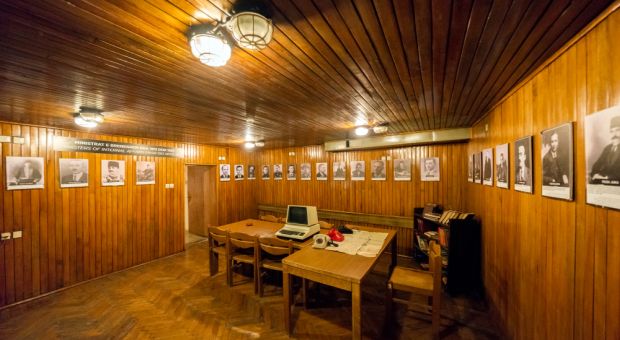

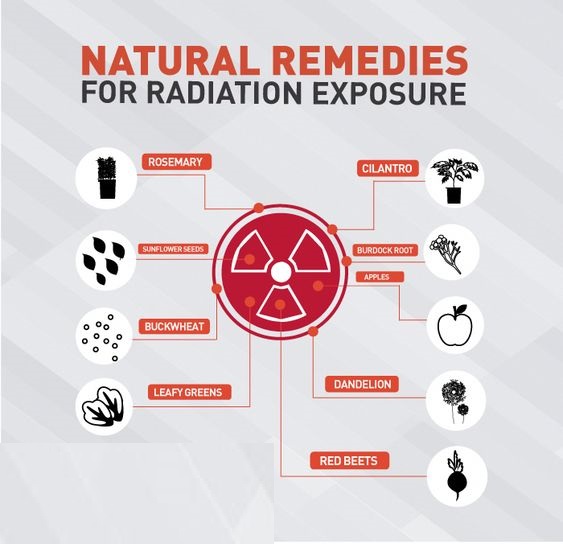


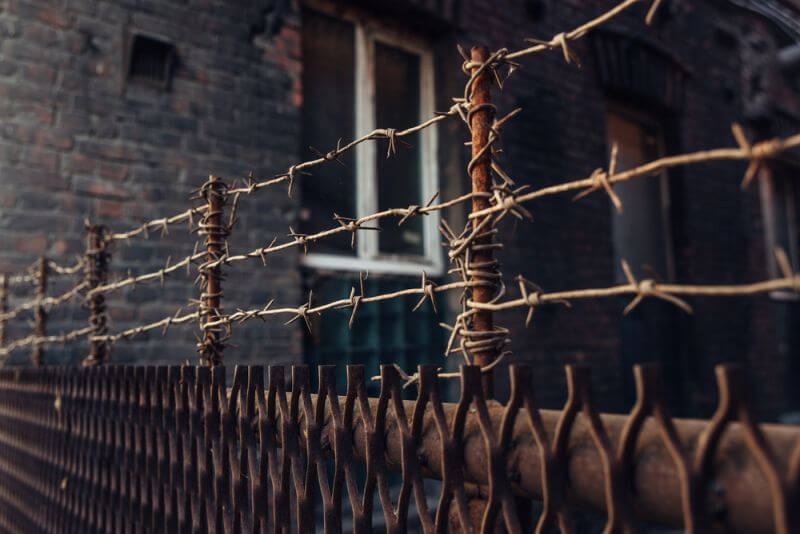
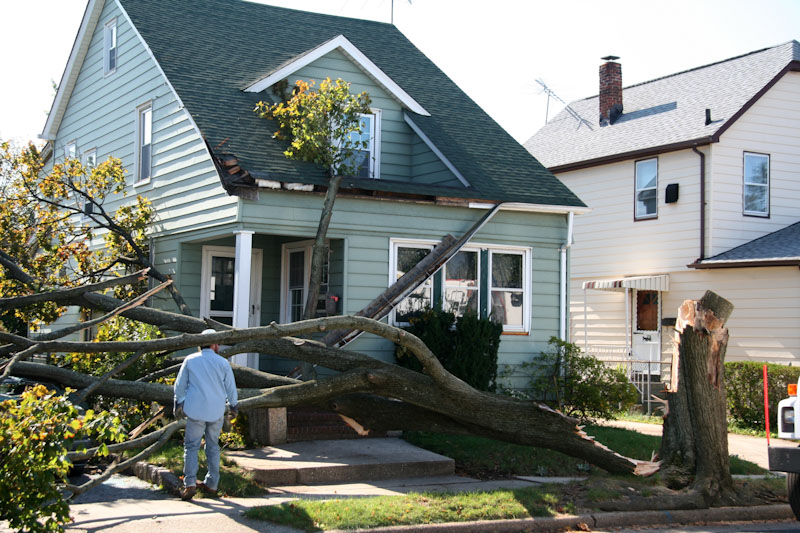
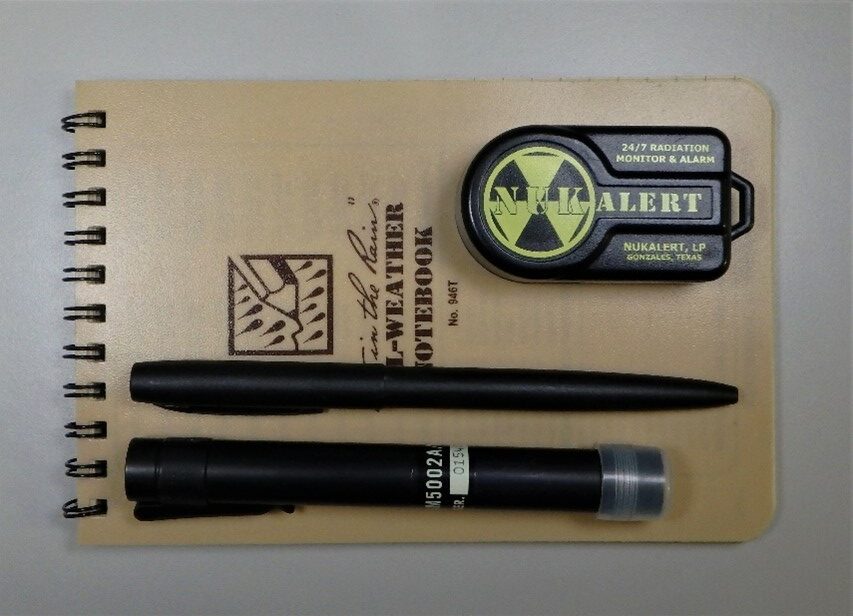


LC65 | September 12, 2019
|
How do you have 3- 5 ft of dirt above you hatch and still get in ?
Tom MacGyver | September 13, 2019
|
Dig that Commodore PET computer in the picture!
…And THREE ROTARY PHONES!